Hey there, fellow sciatica warriors! In this article, we’ll dive into the world of non-surgical sciatica treatments.
Say goodbye to invasive procedures and hello to effective, non-surgical sciatica treatments that can provide you with relief and get you back to living your best life.

Common Causes of Sciatica
Let’s delve deeper into understanding the different types of sciatica. It’s crucial to be on the same page regarding this condition. The issue manifests as a searing, shooting pain that travels along the sciatic nerve, which extends from the lower back down through the buttocks and each leg.
This excruciating pain is commonly caused by the compression or irritation of the nerve roots in the lower spine. It’s important to note that sciatica can present itself in various forms, such as:
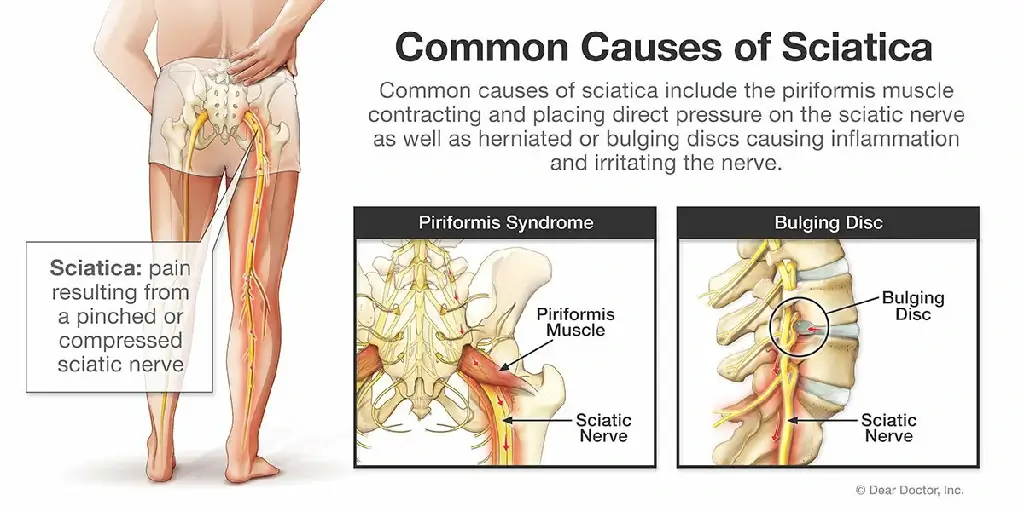
- Lumbar Radiculopathy: This type of sciatica occurs when the nerve roots in the lower back, specifically the lumbar region, become compressed or irritated, leading to radiating pain down the leg.
- Piriformis Syndrome: Characterized by the compression or tightness of the piriformis muscle, this type of sciatica results in buttock and leg pain due to the muscle’s proximity to the sciatic nerve.
- Spinal Stenosis: Narrowing of the spinal canal can cause sciatica symptoms. This condition puts pressure on the nerve roots and deteriorates with age, leading to pain, numbness, and weakness along the affected leg.
It’s that sharp, shooting pain that radiates along the sciatic nerve, often caused by compression or irritation. Now that we’re clear on that, let’s explore the non surgical treatments for sciatica at your disposal.
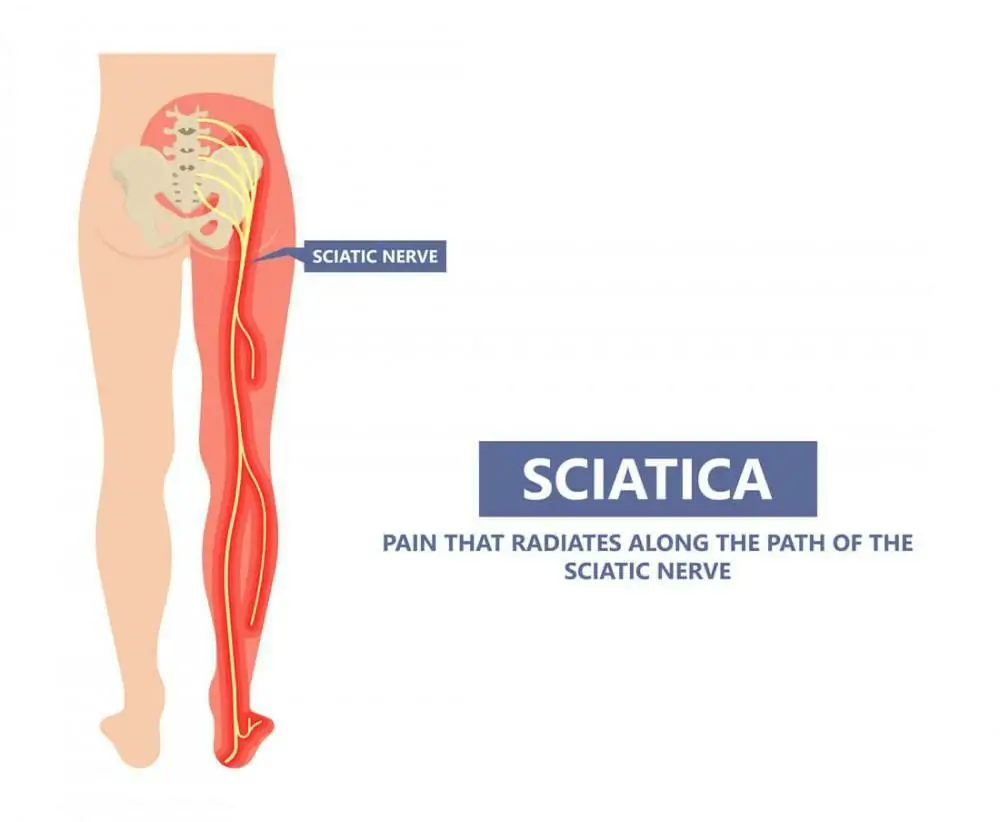
Treating Sciatica with 6 Non-Surgical Approaches
1. Medications and Pain Management
When the pain strikes, over-the-counter pain relievers such as ibuprofen can be a valuable tool in providing temporary relief. They act as a stopgap solution, offering respite while we explore more long-lasting treatment options.
It’s important to note that while these medications can effectively alleviate pain in the short term, they do not address the underlying cause of discomfort. Therefore, it’s crucial to view them as a temporary measure to alleviate discomfort until we find a more non-invasive treatment for sciatica.

Before diving into non invasive treatments, it’s worth considering the potential limitations of relying solely on medications. While they can provide immediate relief, it’s essential to recognize that the pain may return once the medication wears off.
To achieve lasting improvement and truly tackle the root cause of the problem, exploring non-surgical methods is crucial. So, let’s delve into a range of non-surgical healing options that may offer more lasting relief and a path towards healing.
2. Chiropractic Care
If the root cause of your sciatic nerve pain is a herniated disc, chiropractic adjustments could be just the golden ticket you need. These hands-on treatments, performed by skilled chiropractors, have shown promise in providing relief from sciatic nerve pain. By carefully manipulating the spine, chiropractic adjustments can effectively alleviate pressure on the sciatic nerve, allowing it to heal and reduce inflammation.
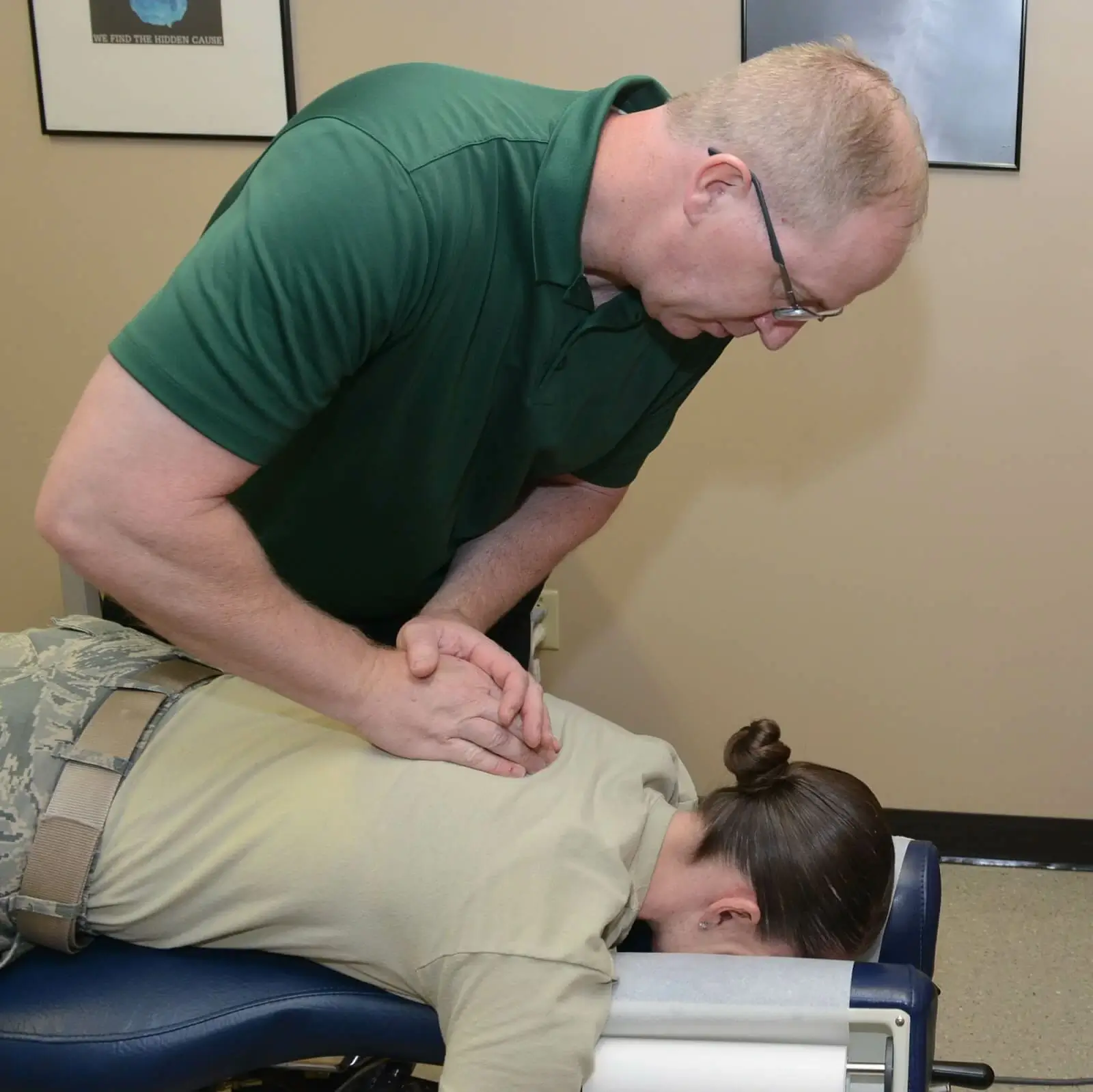
However, it’s important to note that if your discomfort is caused by muscle-induced issues such as piriformis syndrome, more effort may be required to achieve desired results. In these cases, you should employ additional ways to target the specific muscles contributing to the compression of the sciatic nerve.
Chiropractic care offers a non-surgical healing approach that aims to tackle the underlying causes of your pain, and restore proper function and alignment to the affected area, providing significant relief and promoting overall healing.
3. Physical Therapy
Let’s not waste a moment and get those muscles moving! When it comes to treating pain, physical therapy emerges as a true game-changer. Working with a skilled physical therapist, you’ll embark on a customized program consisting of targeted exercises and stretches that aim to curing pain, improve flexibility, and loosen your psoas muscles—all essential components for managing and reducing the impact of sciatica.
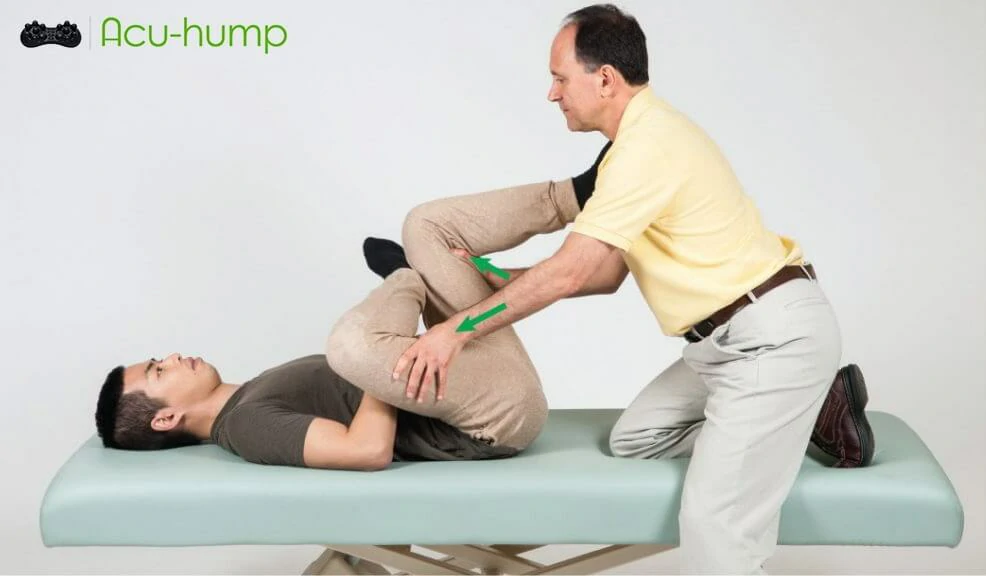
Your dedicated therapist will guide you through each exercise, ensuring proper form and technique. These exercises not only help to relieve pressure on the sciatic nerve but also promote overall spinal health and alignment. By engaging in consistent physical therapy sessions, you’ll gradually build strength and endurance, leading to more lasting results.
Remember, Rome wasn’t built in a day, and the same principle applies here. Consistency is key, and with dedication to your prescribed exercises, you’ll find yourself on the path to long-term relief and improved functional well-being.
So, lace up those sneakers, roll out that exercise mat, and let physical therapy be your passport to a life of reduced pain and restored mobility.
4. Alternative Therapies
Step into the world of alternative therapies! Acupuncture, massage, and other traditional Chinese healing techniques have shown promise in relieving sciatica pain. These holistic approaches focus on targeting the root cause of your pain and promoting overall well-being. Give them a try and experience the unique sensations they offer.
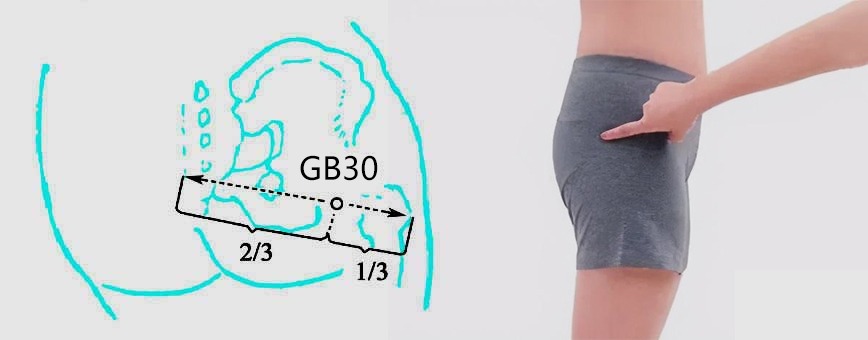
In traditional Chinese therapy, practitioners often begin with muscle massage to release trigger points, tendons, and soft tissues. This technique aims to release tension, improve circulation, and enhance the body’s natural healing abilities.
Following the massage, acupuncture comes into play. By inserting fine needles into GB30 acupressure points or using finger pressure instead, practitioners stimulate these points to alleviate pain and restore balance. When the acupoints are pressed or stimulated, you may experience a sensation of soreness and fullness.
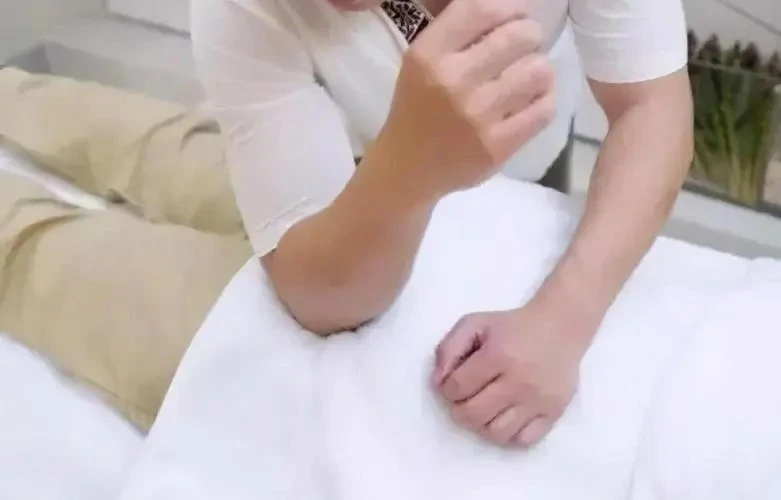
These traditional Chinese therapies marry ancient wisdom with modern understanding, offering natural and holistic approaches to fix your discomfort. Give them a try and embrace the unique sensations they provide on your journey towards relief and restored well-being.
5. Acu-hump Acupressure Massage Tool
Prepare to be amazed – the Acu-hump sciatica massage tool. This innovative tool combines the principles of traditional Chinese acupressure and the techniques used in physical therapy. Its unique design and deep massage capabilities make it just what you need to target those nagging lower back and hip areas.
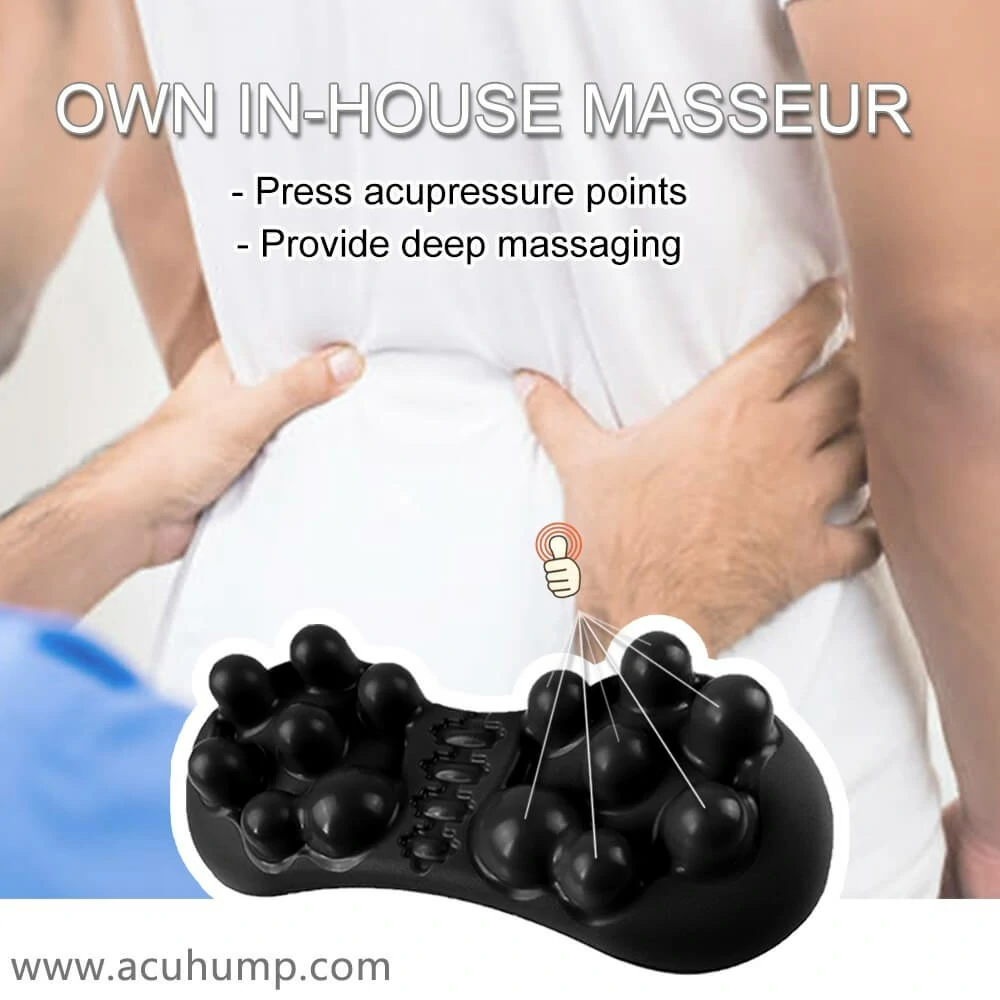

Acu-hump®
Release Butt & Lower Back
By incorporating the Acu-hump into your stretching routine, you can experience a complete release of tension from your lower back all the way to your glutes. The strategically placed bumps and contours on the tool apply pressure to specific acupoints, mimicking the benefits of traditional acupressure therapy.
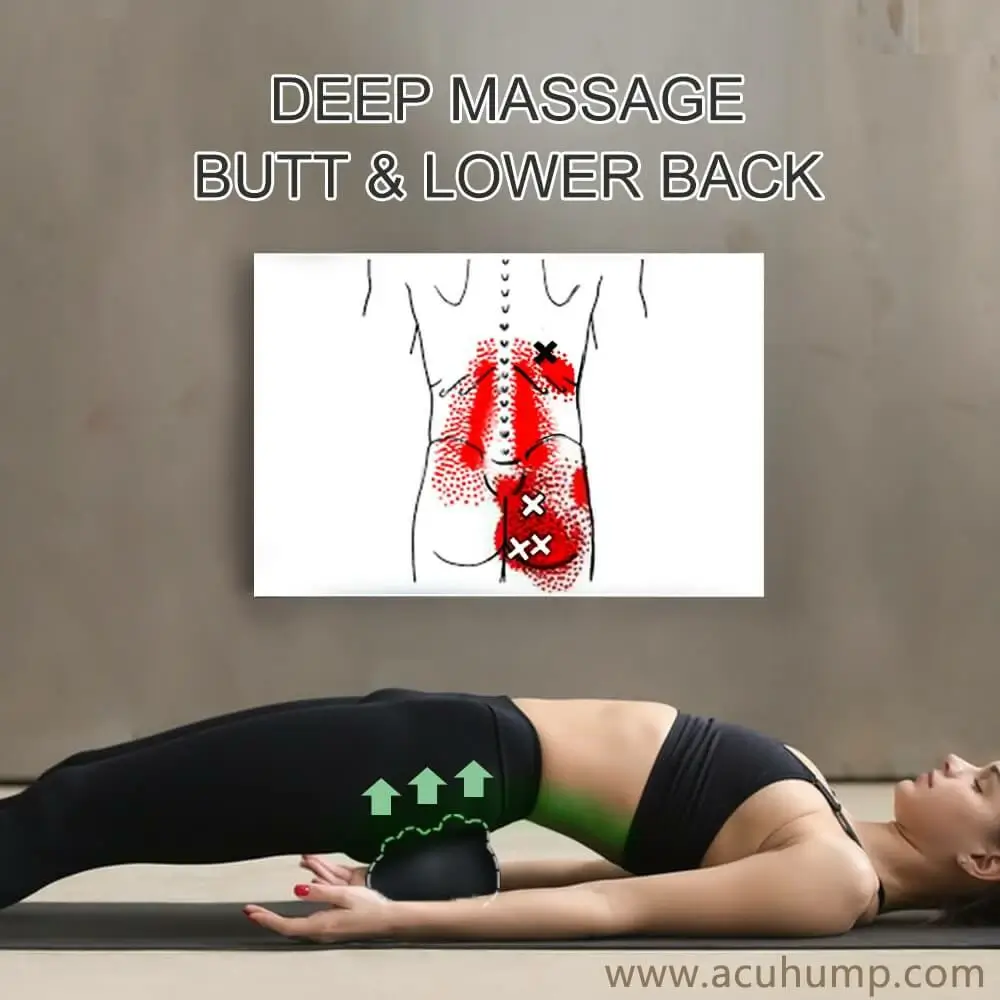
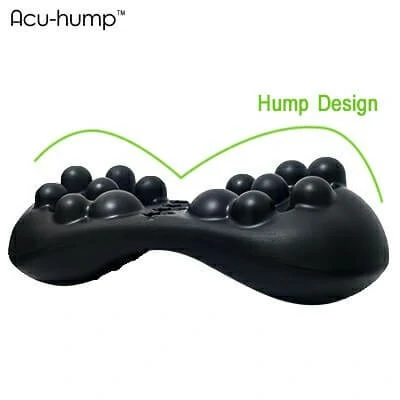
Acu-hump: 30-day return policy.
You have no risk.
Not only does this tool promote blood circulation and relaxation, but it also stimulates the body’s natural healing response. It’s like having your own personal acupressure therapist at your fingertips!
Demonstration of actions to release lumbar spine:

I deal with sciatica and back pain. I’ve used several stretching devices for my back and always wished I could use them on my lower back and hips more. So, this is perfect. The one side with larger “nubs” is a little painful if you’re sore but does work well to work out any knots or trigger points. The other side is gentler and provides a really good stretch for this area. I will continue using it to stretch and relieve tension. I can’t say it’s fixed it, but it certainly will help!
Don’t miss out on this incredible tool. Take your stretching game to the next level and get your very own Acu-hump acupressure massage tool today. Experience the combined power of traditional Chinese acupressure and modern physical therapy techniques, and feel the difference for yourself. Your lower back and hip will thank you!
Demonstration of actions to massage hips:
Acu-hump: 30-day return policy. No risk for you.
6. Lifestyle Changes
When it comes to managing sciatic nerve pain, don’t underestimate the phenomenal power of small changes. Making some adjustments to your everyday habits can have a profound impact on your well-being. Maintaining a healthy weight and engaging in regular exercise play pivotal roles in reducing discomfort.
Regular Exercise
Excess weight puts added pressure on your spine and can contribute to nerve compression. By focusing on maintaining a healthy weight through a balanced diet and regular exercise, you can alleviate strain on your back and decrease the likelihood of sciatica flare-ups.
Incorporating regular exercise into your routine is not only beneficial for weight management but also for improving overall strength, flexibility, and posture. Specific exercises that target your core muscles, such as Pilates or yoga, can provide much-needed support to your spine and alleviate pressure on the sciatic nerve.
Posture
Speaking of posture, paying attention to how you sit, stand, and move throughout the day can make a significant difference. Maintaining good posture helps ensure proper alignment of the spine, reducing the risk of unnecessary stress on the nerves.
Additionally, be mindful of activities that exacerbate your symptoms. Avoid prolonged sitting or activities that involve repetitive motions that strain the lower back. Instead, listen to your body, take breaks when needed, and modify any activities that may exacerbate your pain.
These small yet impactful lifestyle changes can work wonders in treating your sciatica pain and preventing future flare-ups. Remember, every step you take towards a healthier lifestyle brings you closer to a life with reduced pain and improved quality of life. So, embrace these changes and witness the transformative effects they can have on your well-being.

Acu-hump®
Sciatica Massage Tool
In addition to these 6 non-surgical sciatica methods, there are also 4 homeopathic remedies for sciatica. However, it is important to seek professional guidance when embarking on a journey of pain management.
By discussing your symptoms and concerns with a medical provider, you’ll receive personalized treatment plans that cater to your specific needs. Embrace the power of non-surgical sciatica treatments, and say hello to a life with less pain and more joy!
Now, go get that Acu-hump and let’s bid farewell to those sciatica woes once and for all!

Ok, so I’ve had this thing since October. I was a little intimidated to try it. Now I’m kicking myself for staring at it for 6 months! …
You can use it while on the floor, a bed or couch depending on your preferences and the amount of stability you want or can take…
But for myself, I IMMEDIATELY felt putting it on my lower back/hip area is going to be my sweet spot! Just 20 seconds of use, I felt so much better! The tension in my lower back was released enough where I could tell right away. I can’t wait to see how good I feel when I get my time laying on it up to 10 minutes…
